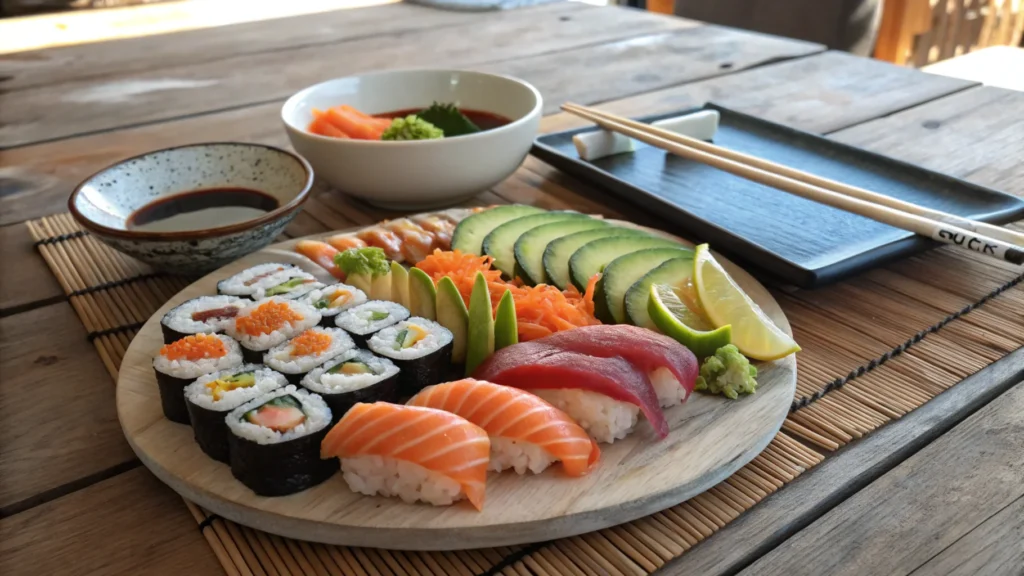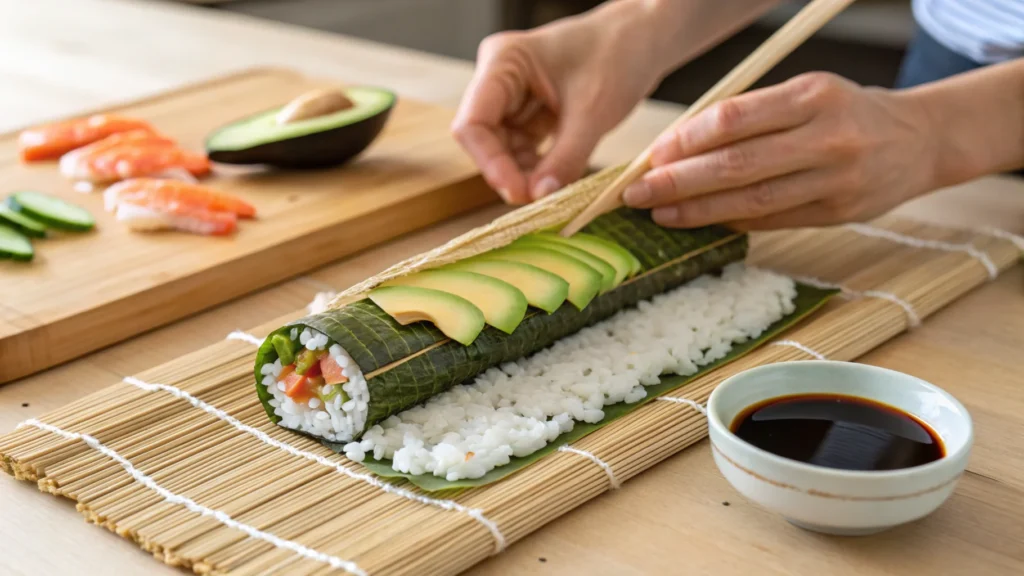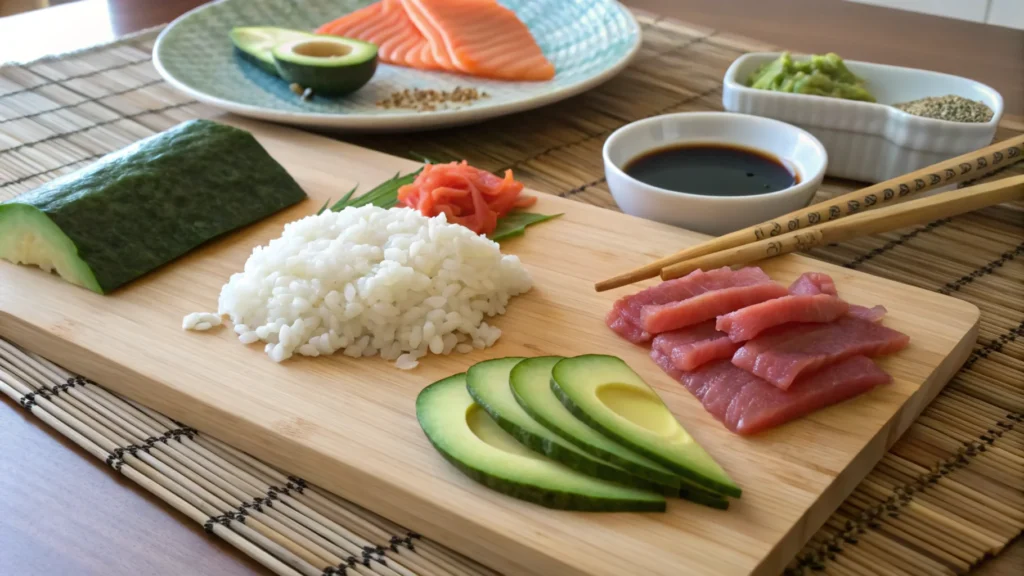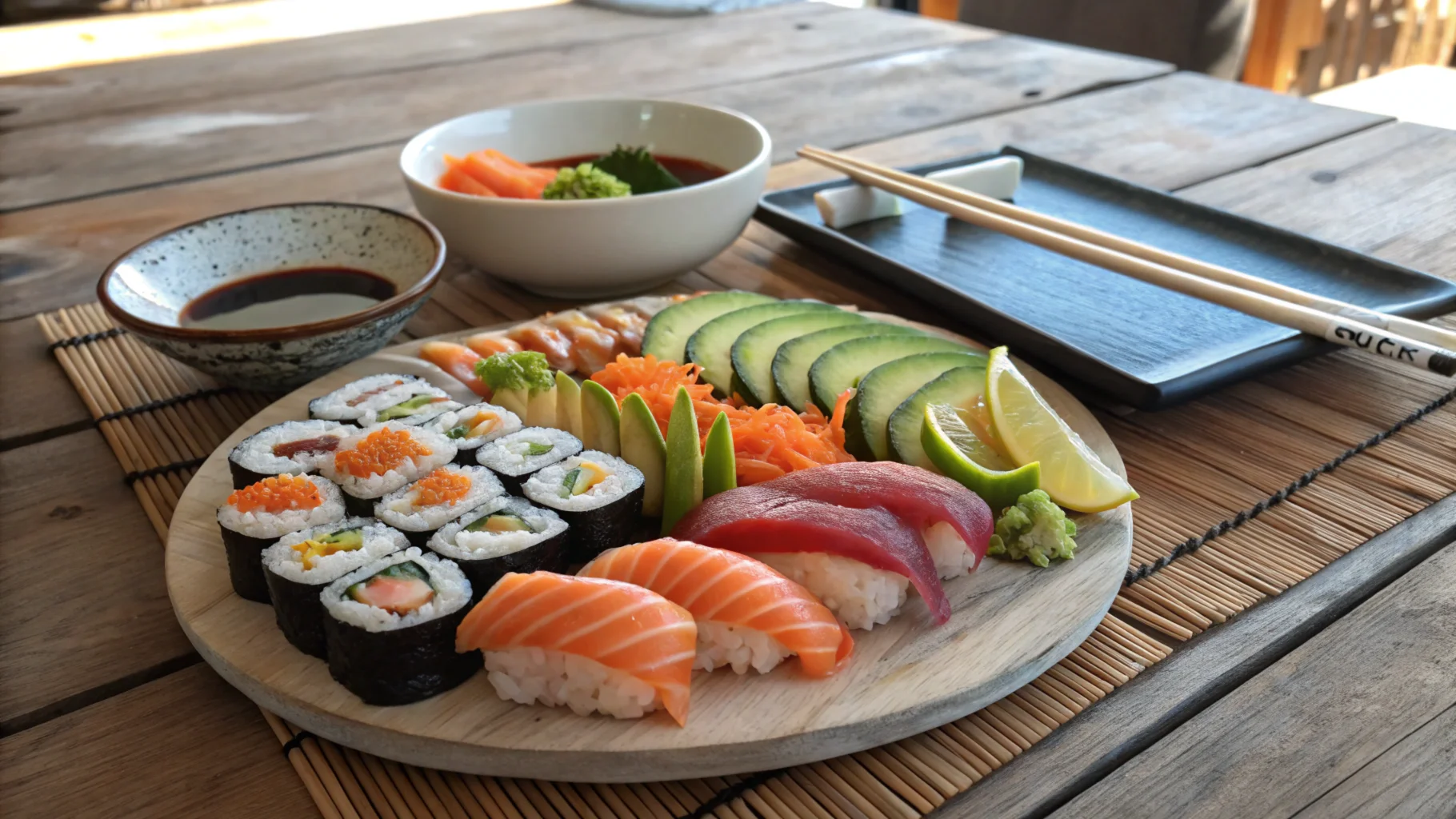Sushi and maki are two of the most popular and beloved dishes in Japanese cuisine. Although they are often associated with each other, there are clear distinctions that set them apart. Understanding the difference between sushi and maki can greatly enhance your appreciation of these culinary delights. Both feature rice and fish as key ingredients, but their preparation, presentation, and cultural significance vary significantly. This article will explore these differences, helping you appreciate the unique nuances of these iconic dishes.
To distinguish between these dishes, it is essential to examine their historical background, ingredients, preparation methods, and health benefits. One is a broader category that includes forms like nigiri and sashimi. These dishes emphasize simplicity and the quality of ingredients. The other is a specific variety. Chefs roll it in nori (seaweed) and often include a variety of ingredients. This makes it a more versatile and creative option.
For a comprehensive look at Maki Sushi: Types, Ingredients, Popular Recipes & Health Benefits, this guide provides valuable insights into the variety and versatility of maki, highlighting its unique appeal in Japanese cuisine.

Table of Contents
How Sushi Differs From Maki
While sushi and maki both originate from Japan and share some common ingredients, there are fundamental differences between them. You can clearly see these differences in how they are prepared and served.
Preparation
The main difference between sushi and maki lies in their preparation method. Sushi refers to dishes made with vinegared rice and various toppings. These toppings can include raw fish, seafood, vegetables, or eggs. Sushi comes in different forms. For example, nigiri consists of a small ball of rice topped with fish. In chirashi, you scatter the toppings over the rice.
Maki, on the other hand, is a specific type of sushi that people roll. To make maki, you place vinegared rice and fillings (like fish, vegetables, or avocado) on a sheet of nori (seaweed). Then, you roll the ingredients using a bamboo mat. After rolling, you cut the sushi into small, bite-sized pieces.The key difference is that maki uses nori as a wrapping agent, giving it a unique texture and flavor compared to other types of sushi.

Ingredients
Sushi and maki share many of the same ingredients, but there are notable differences in their use. Sushi often includes a variety of garnishes, including fish (such as salmon, tuna, and shrimp), vegetables, or even eggs. The defining ingredient is the vinegared rice, which provides a slightly tangy and sweet flavor that complements the toppings.
Maki, while it can contain similar fillings, is distinct because of its use of nori. The seaweed wrap adds a unique, crunchy texture and an umami flavor. Common ingredients in maki include fish like tuna or salmon, along with vegetables like cucumber or avocado. Some maki rolls, like uramaki (inside-out rolls), even have the rice on the outside, providing a different texture experience. The nori not only keeps the roll together but also imparts an additional savory flavor that contrasts with the other fresh ingredients inside.

Types of Sushi and Maki
There are various types of sushi and maki, each with its own unique characteristics and regional variations. Understanding these distinctions can help you choose which type of dish you prefer based on your taste and preferences.
Sushi Types
Sushi comes in many forms, with the most popular being:
- Nigiri: A small mound of rice topped with a slice of fish or seafood.
- Sashimi: Thinly sliced raw fish or seafood served without rice.
- Temaki: A hand-rolled cone of nori filled with rice, fish, and vegetables.
- Chirashi: A bowl of rice topped with assorted fish, vegetables, and garnishes.
Each type of sushi highlights vinegared rice as the star. The toppings can vary widely based on the chef’s creativity and regional availability.
Maki Types
Maki is also divided into different categories, such as:
- Hosomaki: Small rolls with a single filling, often tuna or cucumber, wrapped in nori.
- Uramaki: “Inside-out” rolls, where the rice is on the outside and the nori is on the inside.
- Futomaki: Larger rolls that contain multiple ingredients, including fish, vegetables, and sometimes even egg.
- Temaki: Hand-rolled cones of nori filled with rice and ingredients.
Though maki varies in size and fillings, all types are rolled and sliced into bite-sized pieces.
Cultural Significance of Sushi vs. Maki
Both sushi and maki are culturally important in Japan, but their significance changes depending on the context in which they are served. While sushi has a long history in Japanese culture, maki has emerged more recently and has gained international popularity.
Sushi
Sushi has been a part of Japanese cuisine for centuries, with its origins dating back to the 8th century. Initially, sushi was a method of preserving fish in fermented rice, but over time, it evolved into the dish we know today. People often see sushi as a symbol of Japanese culinary craftsmanship, a dish that embodies the principles of simplicity and precision.
People typically serve sushi during important events or celebrations, such as weddings, festivals, and New Year’s gatherings. They also consider it a delicacy, often enjoying it at high-end sushi restaurants that focus on the quality of the fish and the skill of the sushi chef.
Maki
Maki, in contrast, is more modern in its development. It emerged in the Edo period (1603-1868) and became popular as a street food, offering a more portable and accessible version of sushi. While sushi remains a dish associated with formality and tradition, maki has become a more casual and versatile option.
People around the world now enjoy maki, often serving it in casual settings like sushi bars, buffets, or even at home. Its popularity has grown significantly, especially in Western countries, where chefs have created innovative variations like the California roll to suit local tastes.
For those interested in precise cooking techniques, understanding is salmon 140 or 145? is crucial for achieving the perfect texture and flavor in seafood dishes. Explore this guide to elevate your culinary skills further.
Health Benefits of Sushi and Maki
Both sushi and maki offer a variety of health benefits, particularly due to their inclusion of fish, seaweed, and rice, which are rich in nutrients. However, the nutritional profile of sushi and maki can vary depending on the specific ingredients used.
Nutritional Value of Sushi
Sushi is generally considered a healthy option due to the combination of lean protein from fish, essential fatty acids, and complex carbohydrates from rice. Some key nutritional benefits of sushi include:
- High in Omega-3 Fatty Acids: Fish like salmon and tuna are excellent sources of omega-3 fatty acids, which are essential for heart health.
- Low in Calories: Many types of sushi are relatively low in calories, making them a suitable choice for those watching their weight.
- Rich in Vitamins and Minerals: Fish, seaweed, and vegetables in sushi provide essential vitamins and minerals, including Vitamin A, B vitamins, and iodine.
However, you should keep in mind that sushi can sometimes be high in sodium, especially when served with soy sauce. Moderation is key to enjoying its health benefits without overconsuming salt.
Nutritional Value of Maki
Maki shares many of the same nutritional benefits as sushi, especially when made with high-quality fish and vegetables. However, there are some key differences in its nutritional profile:
- Higher Carbohydrate Content: Maki typically contains more rice than other types of sushi, which increases its carbohydrate content.
- Low in Saturated Fat: The fish used in maki, like salmon and tuna, is low in saturated fat, making it a heart-healthy choice.
- Good Source of Fiber: The nori used to wrap maki provides a good source of dietary fiber, which supports digestion and helps regulate blood sugar levels.
However, certain types of maki, especially those that include fried ingredients like tempura, may be higher in calories and fat.
FAQs
Are Maki and Sushi the Same?
No, maki and sushi are not the same, although they are often confused. Sushi is a broad term that refers to dishes made with vinegared rice and a variety of ingredients, such as fish, vegetables, or egg. You can serve sushi in many forms, such as nigiri, sashimi, or temaki. Maki, on the other hand, is a specific type of sushi that people roll in nori (seaweed) and typically cut into small, bite-sized pieces. While maki is a type of sushi, not all sushi is maki. Thus, maki is just one of the many variations of sushi.
What is Sushi vs Sashimi vs Maki vs Nigiri?
These terms refer to different styles of Japanese cuisine that are based on vinegared rice and various toppings or fillings. Here’s a breakdown of each:
- Sushi: A general term for any dish made with vinegared rice and typically paired with raw or cooked fish, seafood, or vegetables. The most common sushi types are nigiri, maki, and temaki.
- Sashimi: Unlike sushi, sashimi is simply thin slices of raw fish or seafood served without rice. It focuses entirely on the fish itself and is often paired with soy sauce or wasabi.
- Maki: Maki refers specifically to sushi that people roll in nori (seaweed) and fill with vinegared rice, fish, and other ingredients like avocado or cucumber. Then, they slice the rolls into bite-sized pieces.
- Nigiri: This type of sushi features a small ball of vinegared rice topped with a slice of raw fish or seafood. Chefs often garnish it with a dab of wasabi between the rice and the topping.
Each of these dishes varies in its method of preparation, ingredients, and presentation, but they all share the foundational ingredient of vinegared rice.
Is Maki Just Sushi?
While maki is a type of sushi, not all sushi is maki. Maki specifically refers to sushi that people roll in nori (seaweed) with vinegared rice and various fillings like fish, vegetables, or even egg inside. As a broad term, sushi includes other types, such as nigiri, where chefs place a small mound of rice topped with fish, or sashimi, which consists of thinly sliced raw fish without rice. Therefore, maki is a subset of sushi, but sushi includes a variety of other forms beyond just maki.
What Are the Three Main Types of Sushi?
There are three main types of sushi that are widely recognized and enjoyed around the world:
- Nigiri: This type of sushi features vinegared rice molded into a small mound and topped with a slice of raw or cooked fish, seafood, or even egg. Chefs sometimes place a bit of wasabi between the rice and topping.
- Maki: Maki is sushi rolled in nori (seaweed) with a filling that typically includes vinegared rice, fish, vegetables, or even fruit. You can further classify maki into types like hosomaki (small rolls) and uramaki (inside-out rolls).
- Sashimi: While not technically sushi, sashimi consists of thin slices of raw fish or seafood served without rice. It’s often eaten as an appetizer or alongside sushi to highlight the quality of the fish.
Each type of sushi offers a different experience in terms of flavor, texture, and presentation, making them beloved both in Japan and internationally.
Conclusion
In conclusion, many people new to Japanese cuisine wonder, “What is the difference between sushi and maki?” The distinctions are clear when you examine their preparation, ingredients, and cultural significance. Sushi is a traditional dish, focusing on vinegared rice and fresh fish. Maki, however, is a type of sushi that is rolled with nori. It offers a more varied and accessible option, often enjoyed in casual settings.
Sushi and maki are both rich in nutrients and offer various health benefits. They are excellent choices for those seeking lean protein and healthy fats. Understanding the differences between these two popular dishes helps you appreciate their unique flavors and cultural significance in Japan and beyond.
Whether you’re enjoying sushi at a high-end restaurant or grabbing a quick roll of maki at a sushi bar, both dishes are an integral part of Japanese cuisine, offering a delicious and nutritious experience for food lovers around the world.

